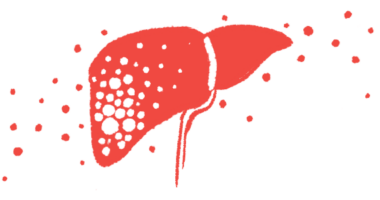Extracellular vesicles can be isolated from CF patients’ blood
Contents may be different from those without disease

Packets of molecular cargo called extracellular vesicles (EVs) can be isolated from the blood of people with cystic fibrosis (CF) and their contents may differ from those who don’t have the disease.
The findings also suggest these contents in CF may be changed by CFTR modulator therapy and broadly suggest EVs may serve as biological markers in CF, said researchers, who urged more study into the potential utility of EVs in clinical practice.
That’s according to the study, “Investigating serum extracellular vesicles in Cystic Fibrosis,” which was published in the Journal of Cystic Fibrosis.
EVs are sort of like shipping containers for cells — bundles of molecules like protein and RNA wrapped up in a cellular membrane. Many different types of cells release EVs, which help them communicate with each other and coordinate complex biological processes.
EVs can generally be isolated from serum (the non-cell part of blood) and an emerging body of research has begun exploring how they might be used to improve healthcare. Until now, there hasn’t been any published report of EVs isolated from the serum of people with CF, however.
“This is the first study of EVs in serum from [people with CF] to our knowledge hopefully leading to future studies in the area,” the researchers wrote.
To isolate EVs, two different laboratory techniques can be used, both of which separate EVs based on their size. In size-exclusion chromotography, or SEC, a sample is run through columns with filters of various sizes, whereas with ultracentrifugation (UC), the sample is spun at high speeds so larger substances move toward the bottom. SEC was generally better than UC at isolating EVs, the researchers found.
Isolating EVs from children, adults
After optimizing their protocol, the researchers isolated EVs from the serum of six children with CF, who had minimal symptoms of the disease. EVs from six children without CF also were analyzed. The age range of these participants was 1 to 4.
The overall number of EVs isolated from the children’s blood was similar in those with or without CF, but the contents differed, the results showed. The researchers identified eight proteins present at significantly altered levels in EVs from children with CF. One noted change was the level of proteins involved in inflammatory signaling,
“Although we did not observe an increase in the numbers of EVs from the serum of young children with CF compared to controls, the expression of inflammatory proteins … within CF EVs increased,” the researchers wrote.
They then obtained EVs from five adults with CF and noted they were able to isolate more from the adult samples than the children. They observed 19 proteins were present at significantly altered levels in EVs from adults.
Finally, the researchers compared the EV contents for five adults with CF before starting Trikafta (elexacaftor/tezacaftor/ivacaftor, sold as Kaftrio in Europe).
Trikafta is a triple-combination CFTR modulator therapy that can boost the functionality of the CFTR protein in people with specific mutations. It’s widely approved to treat CF. Trikafta is sold by Vertex Pharmaceuticals, which was not involved in the study.
While EV counts didn’t change before and after a year of Trikafta treatment, levels of 24 proteins were significantly altered in EVs after treatment, results showed.
The researchers noted the study is limited by its small size, but said it could serve as a starting point for future research to assess the potential uses of EVs in CF.
“Larger donor number and longitudinal time points should further establish the diagnostic potential of serum EVs in CF,” they wrote.








